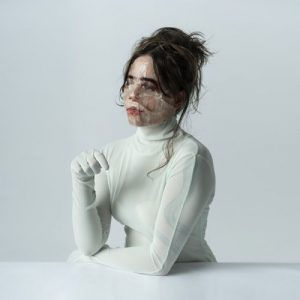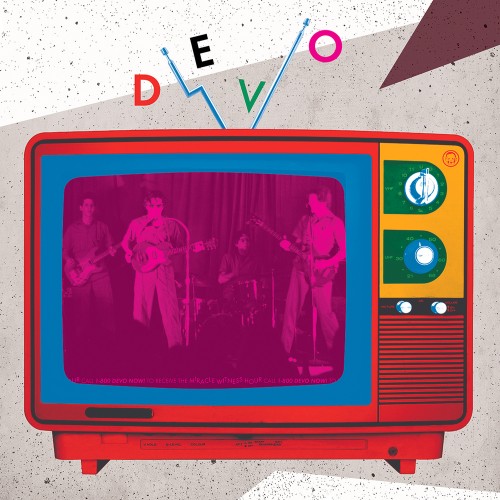 The cover image of the debut album by Montréal producer Kee Avil is certainly a disconcerting one. She sits at a desk in a sterile room with a paper mask of her own face over her actual face. It gives the sense of a twist of reality which runs through the ten tracks on Crease, merging abstract experimentation with sinuous rhythm and her own insinuating vocals.
The cover image of the debut album by Montréal producer Kee Avil is certainly a disconcerting one. She sits at a desk in a sterile room with a paper mask of her own face over her actual face. It gives the sense of a twist of reality which runs through the ten tracks on Crease, merging abstract experimentation with sinuous rhythm and her own insinuating vocals.
Kee talks of her itchy teeth while presiding over a malignant child’s toy room and there is frustration and a kind of coiled intensity that alternates with “Saf”‘s more hypnotic delivery. Like staring into the eyes of the snake in The Jungle Book, the track’s cooling engine noises tick and scrape as we find ourselves further and further embedded.
I was reminded a little here and there of the sorts of uncomfortable atmospheres that The Paperchase produced. It is hard to relax as these gentle waves of slithering sensation lap at our feet. The album moves like a series of mini filmscapes, married by vocals that change mood with each track depending on the atmosphere required. The image of the “shadow melting slow” evokes the crepuscular vibe as the voice emerges from under the bed tied to a circular, hypnotic guitar motif with unlikely swells.
This ability to tease our minds with a connected series of uneven imagery comes from many years of playing in a variety of noise and improv groups in Montréal, but this opportunity to delve deeply into her own thoughts and entwine the listener is just great. Coming at it as much from a sculptural or impressionistic direction as from a songwriting one, the pieces move with awkward reanimation.
The brooding geigerscape of “Devil’s Sweet Tooth”, with its distended strings and harmonium rising above aeons of sand is very different to the preceding “I Too, Bury”, which rollicks along on a drunken, frightened funhouse piano. But it is the very secure sense of self that permeates each piece on Crease, knowing enough to draw the listener in any direction and keep them compelled.The album ends with the short, looping lullaby of “Gone Again”, a brief reminder of our universe temporarily suspended and somehow draped with her own. It is a powerful first step and worthy of investigation.
-Mr Olivetti-



